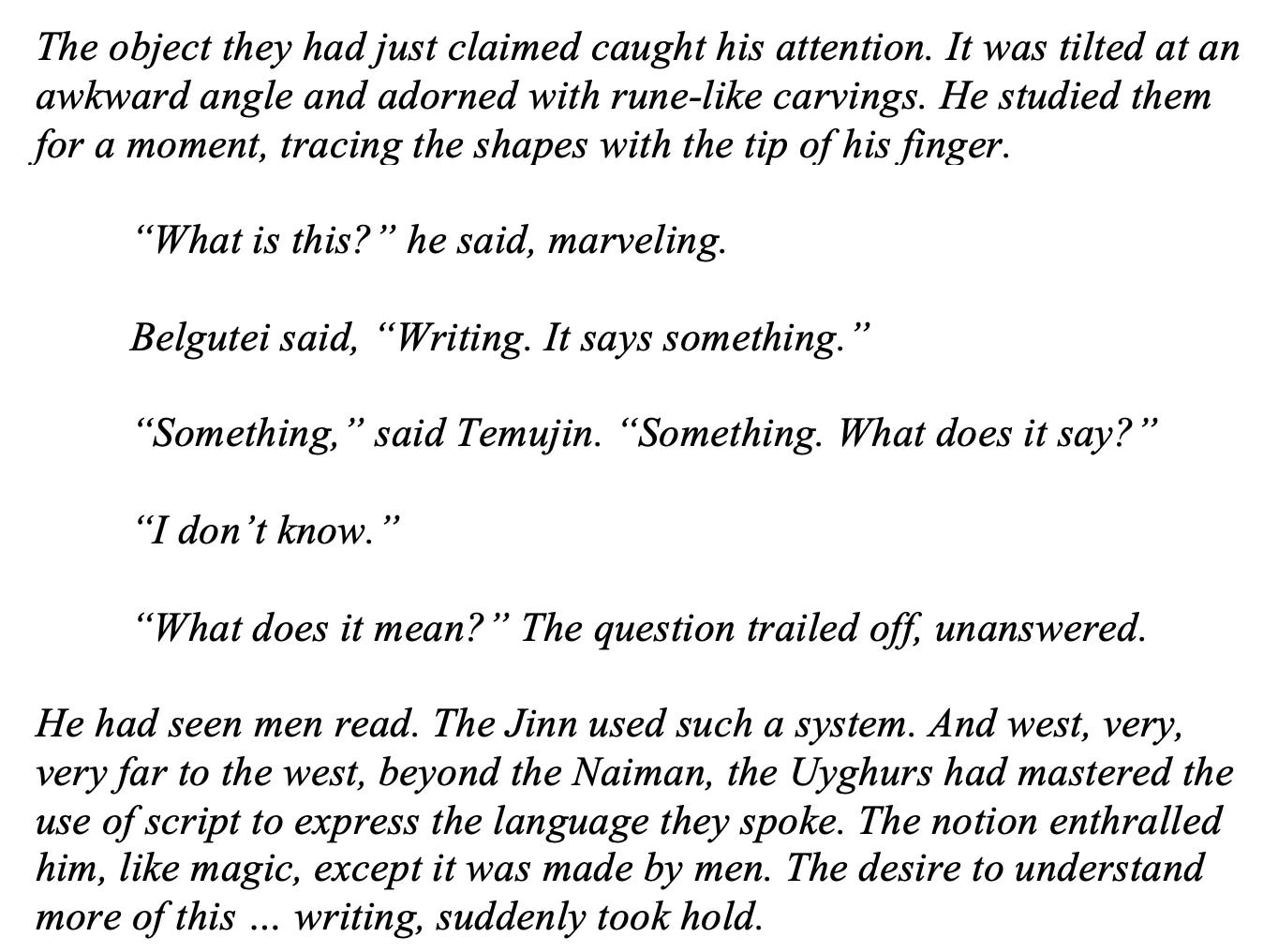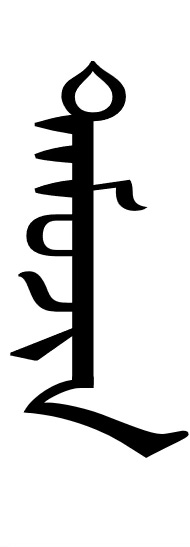Genghis Khan's 'aha' Moment, Part I
An Unlikely Gift from a Notorious Tyrant

One of the shortcomings of a nomadic society like the sheepherding Mongols is lack of permanence. When people must pack up and seasonally transport their entire inventory of material possessions along with tens of thousands of animals, traveling light is a necessity. It follows, then, that a written language is an impossible luxury. Oral traditions help to fill the cultural void, ensuring cohesion and commonly shared values among tribal members. But lack of documented records or literature is a major cultural disadvantage for both nomad and history.

Enter Genghis Khan, otherwise known as Temujin. One of his unlikely gifts to the world was the development of a writing system for the Mongol language. In my novel, Temujin receives a flash of insight during an 1196 AD raid on the Tatar people when he sees written language and, in a single moment, fully grasps its significance. In today’s parlance, we call that the ‘aha’ moment.
Short passage from the story:
Since he was in the midst of plundering an enemy camp, Temujin could only stash the thought in back of his mind for safekeeping; but pragmatist that he was, he made use of it at an opportune time. That time came shortly before his unification of the steppe tribes in 1206 AD, when a captive Uyghur scribe named Tata-tonga was directed to develop a written system for the Mongol language.
Tata-tonga borrowed the script from his native Uyghur tongue and adapted it to fit spoken Mongol. This Mongol script was used until 1941, when it was replaced by Cyrillic after the Soviet revolution, but can still be found in use today in parts of Mongolia.
Part II, Coming Soon! The unexpected benefit to the world of Temujin’s inspiration.





That statue is amazing! I'd never seen it before. Loved the snippet from your book! Can't wait to read more.